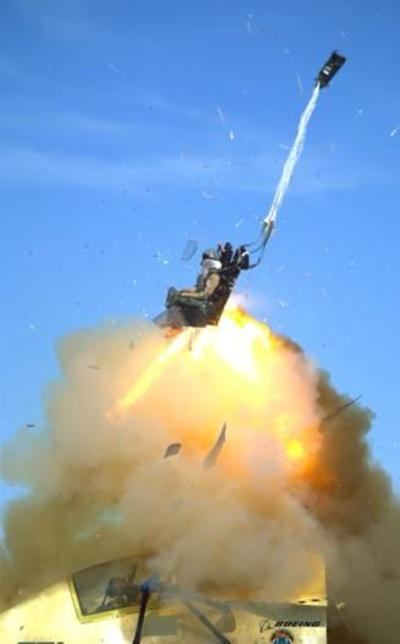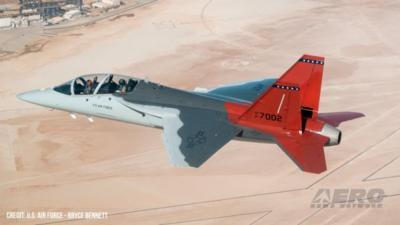The Air Force Notes That 'Ejection Seats Are A Critical System For Fighter And Trainer Aircraft' (No Kidding...).
USAF's Life Cycle Management Center’s Mobility and Training Aircraft Directorate reports that it has successfully tested the ACES 5 Escape System Drogue chute that will be installed on the T-7A Red Hawk trainer aircraft.

“We’re testing a possible new use of the ejection seat drogue chute,” said Dr. Dan Mountjoy, T-7A Crew Systems Lead Engineer with the directorate’s T-7A Program Office. “The ejection seat configuration we’re going to be using on the T-7A has not been used on any other platform or for the full anthropometric range of occupants. It’s going to need to safely eject pilots that weigh between 103 and 245 pounds.” The Air Force notes that 'Ejection seats are a critical system for fighter and trainer aircraft.' No Kidding...
Historically, the drogue chute was designed to slow the ejection seat and occupant down after an ejection at speeds above 250 knots and before the personnel parachute is deployed. Working closely with the ACES 5 developer, Collins Aerospace, and the T-7A Prime contractor, Boeing, the program office needed to gather important data at speeds below 250 knots and ensure the system will properly operate and supply the necessary drag to improve stability during the slower speed ejections.
Four tests were accomplished at Hurricane Mesa Test Facility in Utah between Nov. 2 and 14, 2023.
“This large test effort to accomplish this many tests in such a short time was successful due to the professionals at the test facility and the tremendous coordination that occurred between the teams leading up to test execution,” said Joe Rich, Air Vehicle Branch, Flight Systems Lead Engineer for the program office. “The adaptation of an existing test sled and existing drogue chute assets allowed the program to collect the data needed in a very dynamic environment of constantly changing airspeeds during test runs. This allowed for cost savings and proof of theory for possible use of the drogue chute in slower speed ejections.”
The T-7A program will utilize the drogue chute data gathered to help improve the performance of its ejection seat. In collaboration with other U.S. Air Force ACES 5 programs the data will be shared to help with possible improvements in those platforms as well and the greater Air Force ejection seat enterprise.
The T-7A program also did an extensive job gathering mass properties information and aerodynamic wind tunnel data of the ACES 5 family of seats with the aid of the 711th Human Performance Wing at Wright Patterson Air Force Base and the 716th Test Squadron, Arnold Engineering Development Complex at Arnold Air Force Base, Tenn., last summer.
All the testing and data collection will go into an update to the modeling software for ejection seat performance.
The T-7A program’s next phase of testing is to accomplish a fully integrated dynamic sled test in February 2024 at Holloman Air Force Base, N.M., to gather final pieces of information needed to solidify any system updates before implementation and resumption of its qualification program.

Upon completion of this next phase, all the data collected will be used to determine the necessary changes that need to be made to make the T-7A escape system safe for all body types and sizes, thus meeting the U.S. Air Force’s mandate to accommodate a larger range of pilots.
“Our number one priority is to make sure that T-7 pilots are able to fly, land and carry out their training mission successfully, and if needed, be able to eject safely,” said Dr. James Fellows, Air Vehicle Branch Chief for the program office. “Therefore, it is critically important that we ensure the escape system works as intended.”
 ANN's Daily Aero-Term (05.29.25): Terminal Radar Service Area
ANN's Daily Aero-Term (05.29.25): Terminal Radar Service Area ANN's Daily Aero-Term (05.30.25): Very High Frequency (VHF)
ANN's Daily Aero-Term (05.30.25): Very High Frequency (VHF) Aero-News: Quote of the Day (05.30.25)
Aero-News: Quote of the Day (05.30.25) Airborne 05.23.25: Global 8000, Qatar B747 Accepted, Aviation Merit Badge
Airborne 05.23.25: Global 8000, Qatar B747 Accepted, Aviation Merit Badge ANN's Daily Aero-Linx (05.30.25)
ANN's Daily Aero-Linx (05.30.25)




